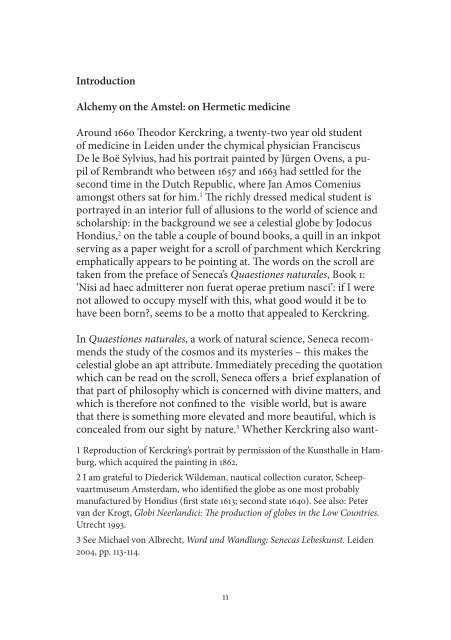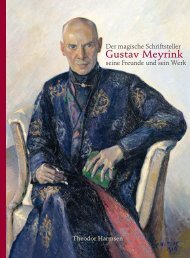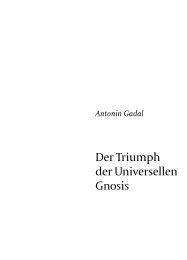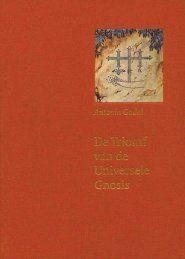Download free chapters! - Bibliotheca Philosophica Hermetica
Download free chapters! - Bibliotheca Philosophica Hermetica
Download free chapters! - Bibliotheca Philosophica Hermetica
You also want an ePaper? Increase the reach of your titles
YUMPU automatically turns print PDFs into web optimized ePapers that Google loves.
IntroductionAlchemy on the Amstel: on Hermetic medicineAround 1660 Theodor Kerckring, a twenty-two year old studentof medicine in Leiden under the chymical physician FranciscusDe le Boë Sylvius, had his portrait painted by Jürgen Ovens, a pupilof Rembrandt who between 1657 and 1663 had settled for thesecond time in the Dutch Republic, where Jan Amos Comeniusamongst others sat for him. 1 The richly dressed medical student isportrayed in an interior full of allusions to the world of science andscholarship: in the background we see a celestial globe by JodocusHondius, 2 on the table a couple of bound books, a quill in an inkpotserving as a paper weight for a scroll of parchment which Kerckringemphatically appears to be pointing at. The words on the scroll aretaken from the preface of Seneca’s Quaestiones naturales, Book 1:‘Nisi ad haec admitterer non fuerat operae pretium nasci’: if I werenot allowed to occupy myself with this, what good would it be tohave been born?, seems to be a motto that appealed to Kerckring.In Quaestiones naturales, a work of natural science, Seneca recommendsthe study of the cosmos and its mysteries – this makes thecelestial globe an apt attribute. Immediately preceding the quotationwhich can be read on the scroll, Seneca offers a brief explanation ofthat part of philosophy which is concerned with divine matters, andwhich is therefore not confined to the visible world, but is awarethat there is something more elevated and more beautiful, which isconcealed from our sight by nature. 3 Whether Kerckring also want-1 Reproduction of Kerckring’s portrait by permission of the Kunsthalle in Hamburg,which acquired the painting in 1862.2 I am grateful to Diederick Wildeman, nautical collection curator, ScheepvaartmuseumAmsterdam, who identified the globe as one most probablymanufactured by Hondius (first state 1613; second state 1640). See also: Petervan der Krogt, Globi Neerlandici: The production of globes in the Low Countries.Utrecht 1993.3 See Michael von Albrecht, Word und Wandlung: Senecas Lebeskunst. Leiden2004, pp. 113-114.






